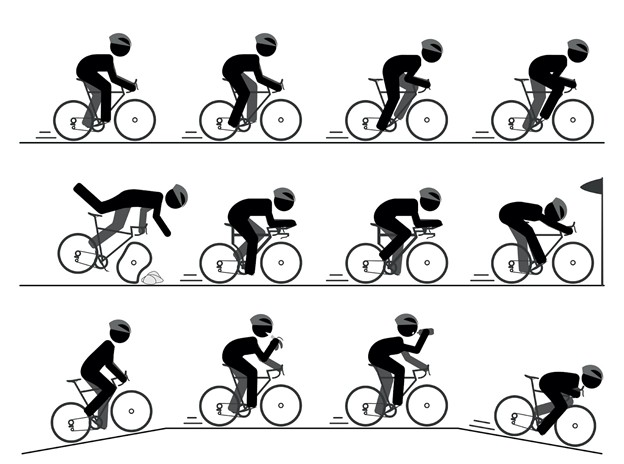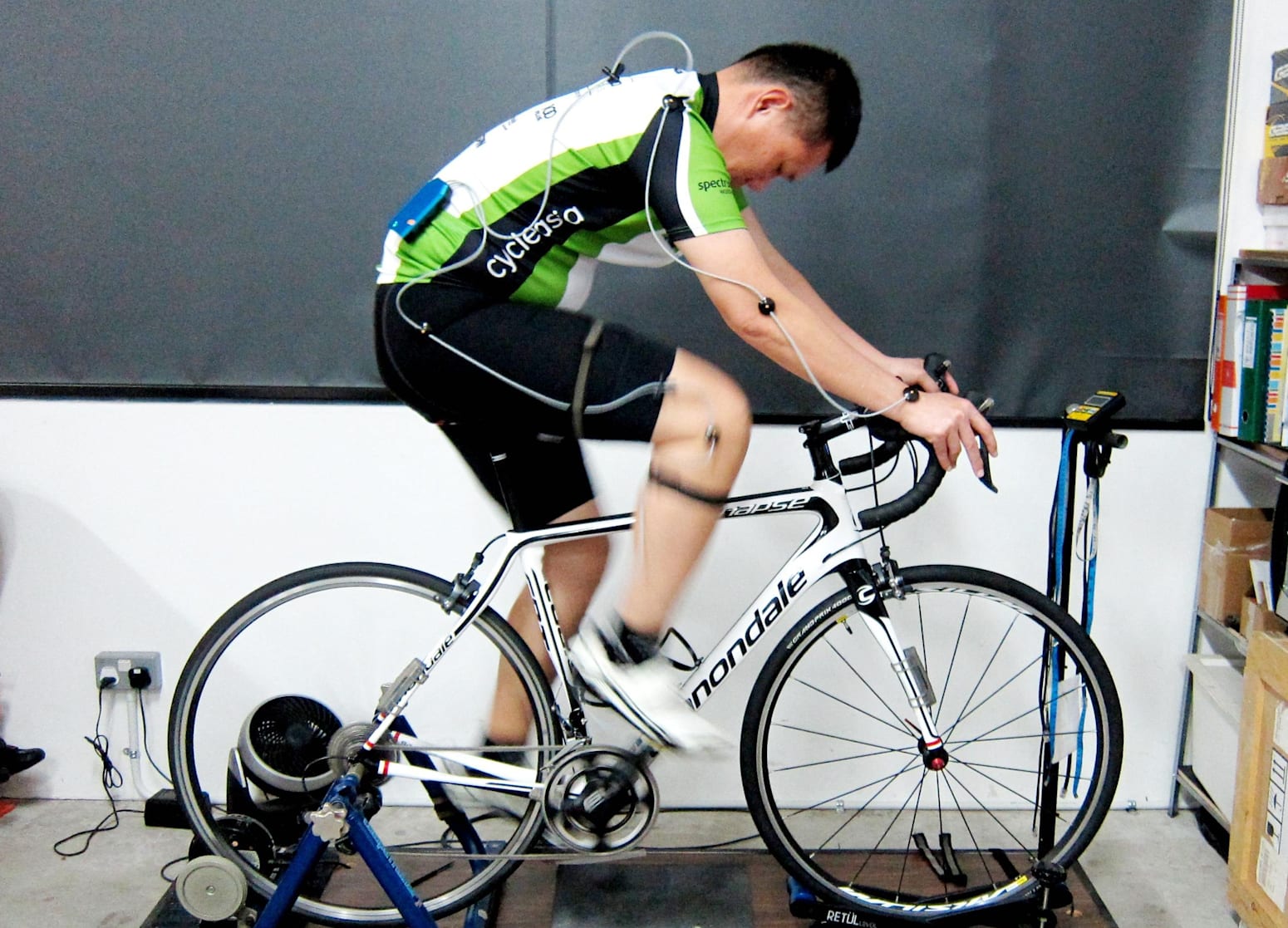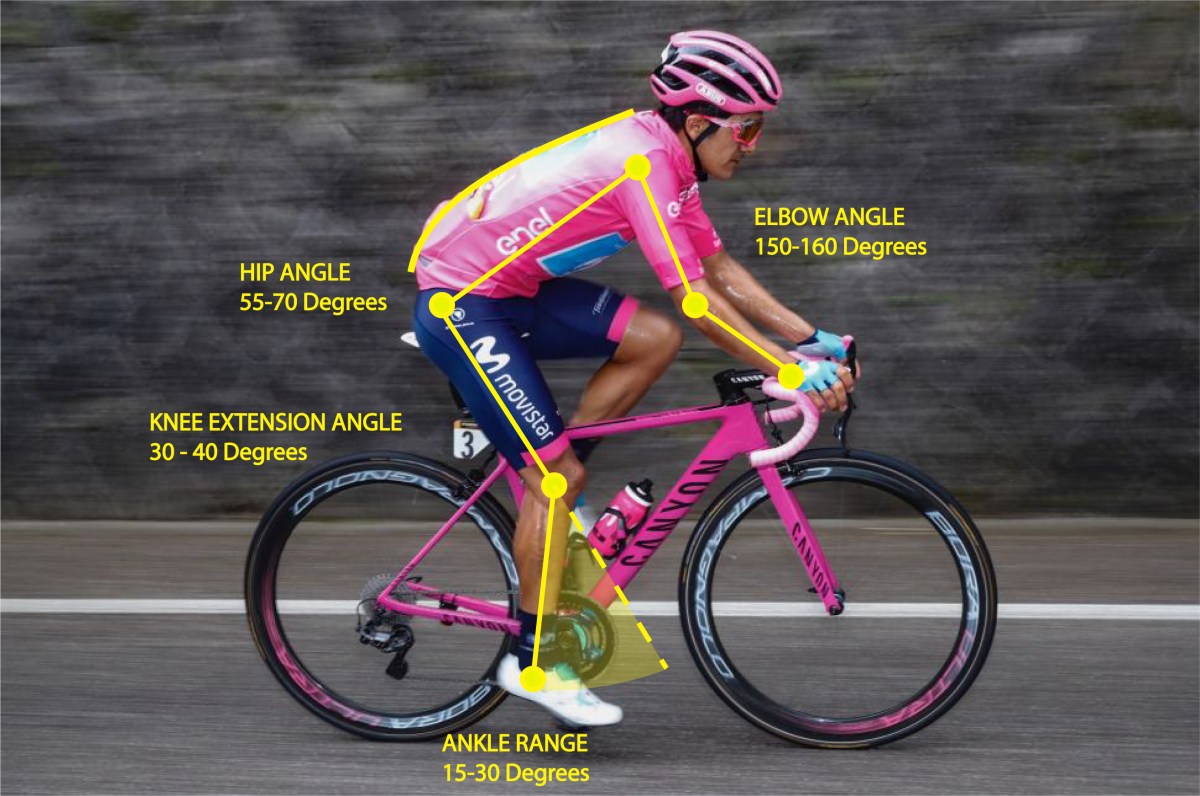Proper Biking Posture: Tips for Comfortable Cycling and Avoiding Back Pain

Cycling is an excellent form of exercise that can help you improve your cardio health, build endurance, and burn calories. An often overlooked aspect of the benefits is also the mental boost you get from being connected to a bicycle and exploring the world. However, to make the most out of your cycling experience, you need to ensure that you maintain the proper biking posture. Now, this is a bit of a misnomer, there is no singular "proper" biking posture, but rather a variety of different proper postures depending on your body type, particular medical conditions and even your goals. For example, if you wanted to go fast and compete for time, the "correct posture" would likely be super aggressive and forward leaning. On the other hand, if you wanted a leisurely ride to the market to pick up some groceries every Saturday morning, the correct posture might look more upright and comfortable. Finding the right posture for you and your purposes not only helps you avoid discomfort and injuries but also helps you ride in the most enjoyeable manner.
Understanding the Importance of Proper Biking Posture
Maintaining the proper biking posture is if you want to incorporate more bicycle into your daily lives. Remember more bicycle = more happiness, so we should all strive to more bicycle more often! Here are some of the top reasons why you should maintain a good posture:
- Preventing injuries and pains and aches: good posture helps distribute your weight evenly, reducing the strain on your joints, muscles, and bones. Recall the last time you were on your bike, and the points of contact that you had with it. These were (a) the saddle, (b) the handlebars and (c) the pedals. Making sure that you're comfortable on all these touch points goes a long way. Furthermore, it also helps you avoid pain and discomfort that may be reffered from these touch points in your neck, shoulders, and back as your body compensates to stay in position.

- Improving performance: When you maintain the correct posture, you can pedal more efficiently, breathe better, and reduce drag, allowing you to ride faster and longer.
- Enhancing comfort: Correct posture ensures that you feel comfortable while cycling, preventing numbness, tingling, and other discomforts.
Performance and comfort are 2 usually diametrically opossing forces on a scale. Usually the trade off for performance is comfort and vice versa. Accordingly, it's important to figure out what your purpose is when hopping on a bike, and this will help you determine what posture you would want!
5 Top Tips for Maintaining the Correct Biking Posture
Without further ado, here are our 5 top tips to help you maintain the proper biking posture regardless of whether you're crouched over your handlebars in an aero position like a Tour De France rider or if you're casually going to pick your kid up from school:
1) Adjust Your Bike to Fit Your Body
 Image credit: Pedalpt.com
Image credit: Pedalpt.com
Your bike should be adjusted to fit your body, not the other way around. Here are some factors to consider when adjusting your bike:
- Saddle height and saddle type: Your saddle should be adjusted so that your leg is almost fully extended when your pedal is at the bottom of its rotation. You may want a bigger cushier seat if you're on a city bike and a narrower saddle if you're on a road bike. When on a city bike, you are riding in a more upright position (making most of your weight on your saddle) as opposed to a road bike where more weight is put on the handlebars in comparision.
- Handlebar height: Your handlebars should be at the same height as your saddle or slightly lower.
- Reach: You should be able to reach the handlebars comfortably without stretching to the point where you hurt or slouching with rounded sholders.
Bonus tip: It's always a good idea to get a bike (if you're in the market for one) that fits your body and your intended riding style! Wehave a range of new and upcycled bicycles from road bikes such as the Specialized Allez E5 Sport to our super comfortable and effecient low maintenance belt drive bicycle.
2) Position Your Hands and Arms Correctly
Position your hands and arms correctly to maintain the right posture, this is super important as it's one of the contact points that you distribute your bodyweight on the bike:
- Grip: You should grip the handlebars lightly, using your fingertips and not your palms. Overgripping is one of the worst mistakes a beginner can make as it would cause your entire body to tense up and can be the cause of aches and pains all over. You want to get comfortable grips such as the Rifle Straight Rubber Lock On Grips that provide adequate support for your palms and don't rotate when you grip them.
- Position: Your arms should be slightly bent, with your elbows close to your body. Your shoulders should be relaxed, not tense. Remember loosey goosey is the key here. Cycling should be relaxing, so try not to tense up too much.
- Braking: You should use both brakes evenly, with your index and middle fingers on the brake levers within easy reach.
3) Keep Your Back Straight and Your Shoulders Relaxed

Your back should be straight, with your shoulders relaxed and not hunched forward. Here's how to achieve this:
- Head: Your head should be up and your eyes focused on the road ahead, not on the ground. Try to maintain a neutral head position, avoid having a "chicken neck" where your head protrudes forward or you may end up with neck pains which leads to back pains.
- Hips: Your hips should be level, not tilted to one side, when seated on your saddle as this may lead to imabalances and pains.
As the American College of Healthcare Administrators say in their article on bike posture says "One of the best things riders can do is relax and let go of tension when pedaling to allow the body to settle into a natural position".
4) Bend Your Elbows Slightly
Your elbows should be slightly bent to help absorb shock and reduce fatigue. If your arms are straight, you'll be more prone to discomfort and injuries. Think of it like a spring, there has to be some slack to bounce.
5) Engage Your Core Muscles

Engaging your core muscles is crucial for maintaining proper biking posture. Many people think that you only cycle with your legs, but your core and midsection are super important to prevent aches! This may also help you with your 6 pac goals that you have. Engage your core muscles by pulling your navel towards your spine, which will help support your back. Use these 3 short but sweet cues to dial in your core work on your next ride out:
- Pull your navel towards your spine to activate your abdominal muscles.
- Maintain a slight bend in your lower back to support your posture.
- Contract your glutes and thigh muscles to help support your lower body.
Common Mistakes to Avoid While Biking
While maintaining the correct biking posture is essential, it's equally important to avoid common mistakes that can lead to discomfort and injuries. Here are some mistakes to avoid:
Slouching
I'm personally guilty of this one from time to time and it's something to keep in mind to avoid! Slouching can put a lot of stress on your neck and back and can lead to discomfort and injuries. Make sure to keep your back straight and your shoulders relaxed while biking.
Leaning Forward Too Much
Leaning too far forward can cause strain on your neck and back and can make it harder to breathe. Make sure to keep your torso in an upright position, with your hips over the pedals. While Tour De France cyclists lean forward a lot to get more aerodynamic, you would first have to learn how to recruit the muscles from your core, to keep everything tight and powerful.
Gripping the Handlebars Too Tight
Gripping the handlebars too tight can cause your hands and arms to become tense and fatigued, leading to discomfort and injuries. Make sure to grip the handlebars lightly, using your fingertips, and not your palms.
FAQs
Q: How do I know if my bike is adjusted correctly?
A: If your bike is adjusted correctly, you should be able to ride comfortably, with your knees slightly bent and your back straight. If you feel discomfort in your neck, shoulders, or back, you may need to adjust your bike. You could also contact us for a bike fit and we can access your needs and how adjustments can be made to fit your bike to your body!
Q: How often should I check my biking posture?
A: You should check your biking posture regularly, especially if you're planning on riding for an extended period. Make sure to periodically assess how your body feels. If something is aching in a way that doesn't seem right, you probably should rethink your posture and possibly make some adjustments to your bike.
Q: Can poor biking posture lead to injuries?
A: Yes, poor biking posture can lead to discomfort, fatigue, and injuries, such as neck and back pain, knee pain, and wrist injuries.
Conclusion
Getting the right biking posture for you is largely a science experiment. Our advice is to work on one cue at a time and see how your body response. If you're biking everyday, some degree of aches will be inevitable, but with the right adjustments both to your bike and to your riding style and posture you'll be able to go much further with minimal aches or pains. Don't give up and keep on cycling!
